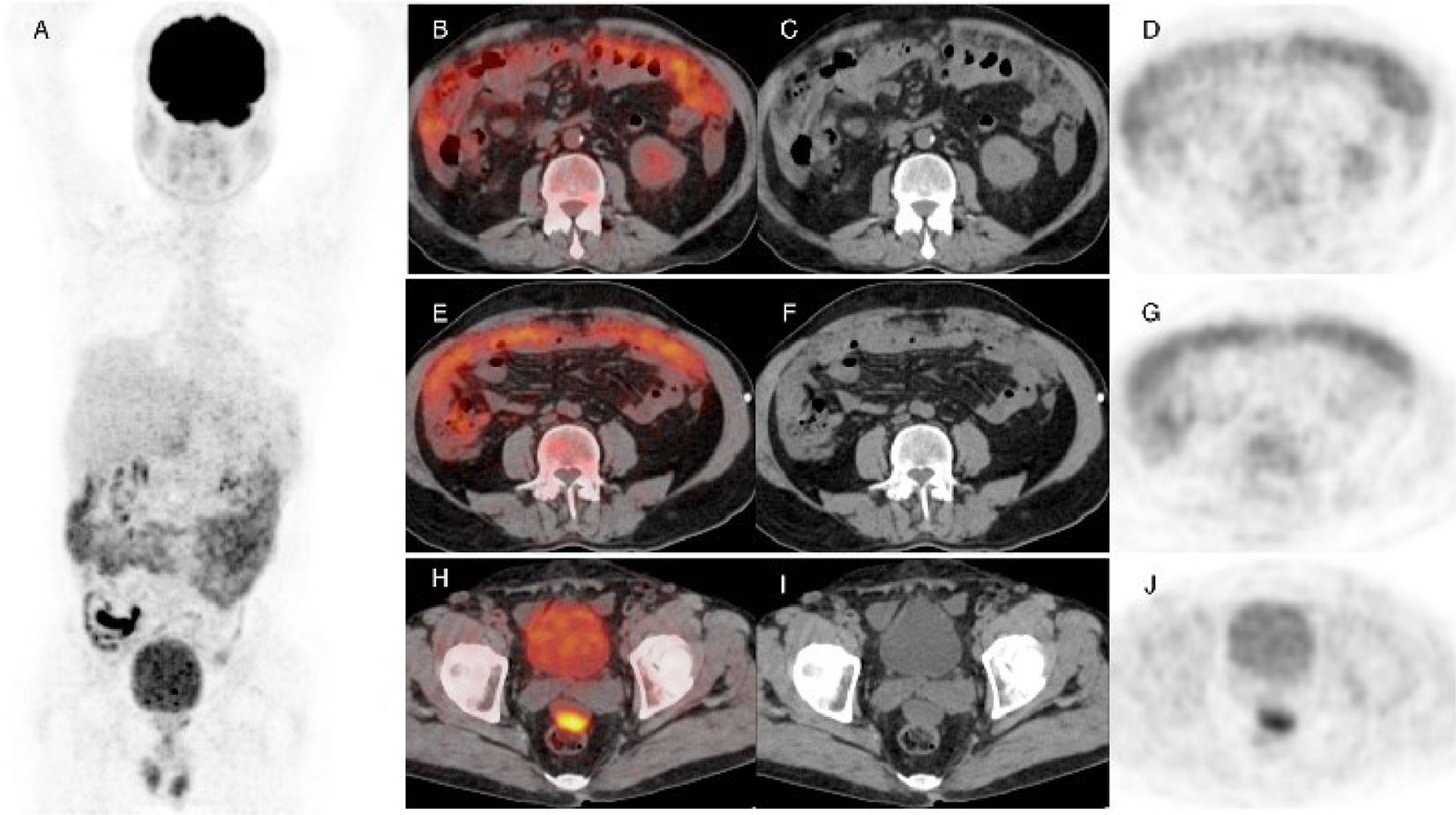
Hematology Specialist Association 18. National Congress
Mais dadosMalignant mesothelioma (MM) is an aggressive tumor typically arising from the pleura, with malignant peritoneal mesothelioma (MPM) accounting for 10-15% of cases. The occurrence of MPM alongside hematologic malignancies is rare. Here, we present a case of peritoneal mesothelioma developing synchronously with CLL/SLL.
Case ReportA 68-year-old male was referred to our clinic in August 2023 with lymphocytosis, reporting weight loss and night sweats. His medical history included diabetes, hyperlipidemia, and hypertension, and a family history of stomach cancer. The patient had quit smoking 30 years ago and had a history of chronic alcohol use. There was no known asbestos exposure despite his occupation as a construction worker. Physical examination was normal.
Routine laboratory tests and flow cytometry were conducted. Imaging via thoracic and abdominal USG and PET/CT identified multiple lymphadenopathies and omental thickening indicative of peritoneal infiltration (Image-1). The patient was diagnosed with RAI Stage 3 CLL/SLL.
In addition to hematological follow-up, the patient was referred to oncology and general surgery. He chose to continue his hematological follow-up in our clinic while receiving oncological and surgical follow-up at an external center. He is treated for CLL with ibrutinib and cisplatin-pemetrexed-altuzan for mesothelioma.
DiscussionThere is limited knowledge about the epidemiology and treatment of malignant peritoneal mesothelioma due to its rarity. In studies of mesothelioma associated with hematological malignancies, patients published predominantly have pleural mesothelioma.
ConclusionAs a result, mesothelioma should be considered as a differential diagnosis in hematological cancer patients with abdominal masses, and further investigation needs to be conducted.
Image 1: Full Body PET scan (A),Axial PET/CT images showing omental thickening and peritoneal involvement (B, E,H), Corresponding axial CT images (C,F,I),PET images highlighting FDG uptake (D,G,J)Bone marrow and omentum biopsies were performed. The bone marrow biopsy confirmed CLL/SLL.
Table 1: Omentum biopsy revealed low-grade malignant epithelial mesothelioma









